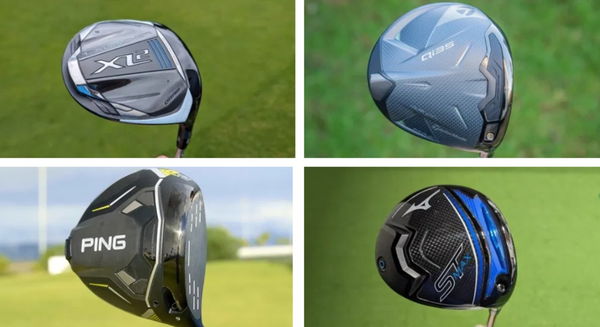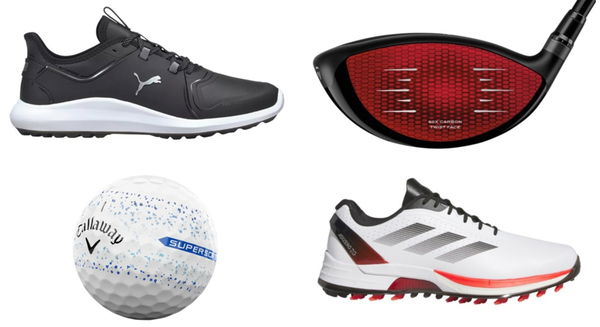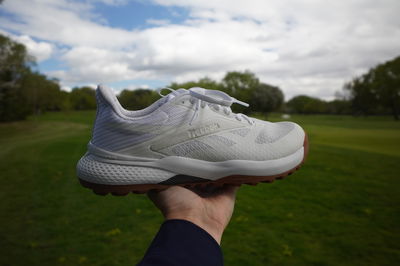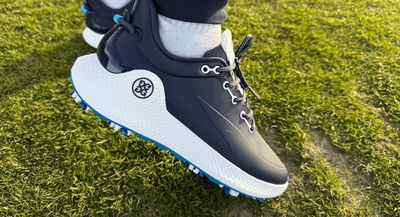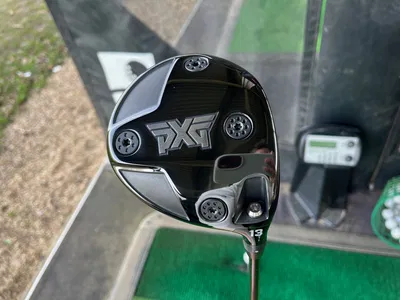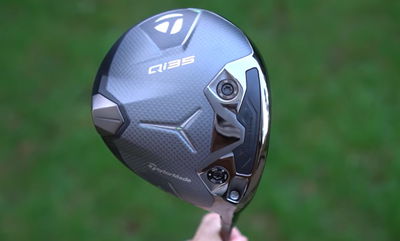Best Golf Drivers for Better Players: Buyer's Guide and things you need to know
Your guide to the best golf drivers for better players in 2025, and everything you need to know before splashing the cash on a low-spin driver.
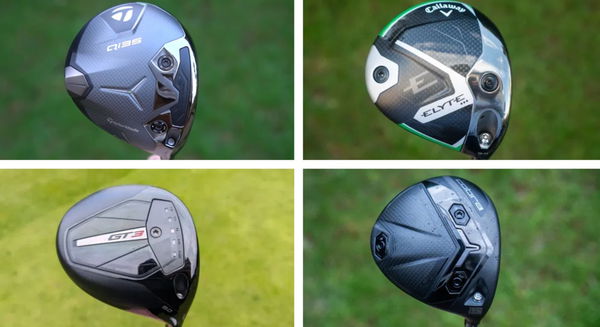
If you class yourself a high-swing speed player then there is every chance one of the best golf drivers for better players could help you truly maximise your distance off the tee this season.
For those golfers who generate ball speeds of over 160mph, a golf driver that reduces backspin rather than maximises it will produce a more optimal spin rate for greater distance.
Low-spin drivers are not universally suitable. They typically result in a lower, more penetrating ball flight, and if not wielded with skill, they can hinder rather than enhance your chances of hitting the fairway.
However, in the hands of a skilled player, they can truly be a game-changer, significantly boosting your distance off the tee.
Because of their more compact construction and more forward-placed weight, low-spin drivers tend to lack the forgiveness of core models or those designed to be more forgiving.
Most major brands produce a low-spinning driver; thankfully, we've tested almost all of them.
Related: Best Golf Drivers 2025
GolfMagic's expert equipment team has tested all of the best low-spin drivers on the market, putting them through their paces on the golf course and in the studio at Custom Golf Works using a GC Quad launch monitor.
Our mission, as always, is to help you get the most out of your golf driving and shoot lower scores at a price that is right for you.
Best Golf Drivers for Better Players 2025
Let’s take a look at what we consider to be the very best low-spin drivers on the market right now, starting with our favourite of the lot...
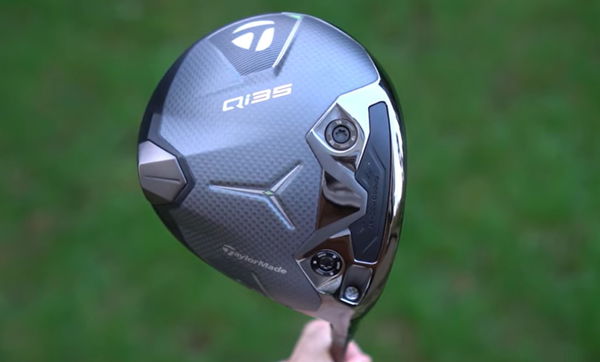
TaylorMade Qi35 LS
Key Features:
- Low-Spin Design – The forward CG placement reduces spin, helping strong players achieve penetrating ball flights.
- Compact 430cc Head – Slightly smaller than the standard Qi35 model for a more workable and precise shot shape.
- Fade Bias Weighting – A toe-weighted design that promotes a left-to-right shot shape, ideal for high-speed swingers who want to eliminate a left miss.
- Advanced Aerodynamics – Designed to reduce drag and increase clubhead speed.
- Premium Shaft Pairings – Optimised for stiffer, low-launch shafts to match the needs of high-speed players.
- New Fitting Matrix – TaylorMade’s updated fitting system considers closure rate and player tendencies for optimal shaft recommendations.
Price: £529 / $650
Pros:
- Low spin and high ball speed—perfect for elite players.
- Compact head with a tour-inspired shape.
- Workability is outstanding—great for shaping shots.
- Penetrating flight with fade bias—eliminates the left miss for better players.
Cons:
- Not that forgiving—mishits are punished significantly
- Difficult to control for mid-handicappers.
- Requires precise shaft fitting—TaylorMade’s new fitting system is great, but some players may feel limited by the recommendations.
If you’re a low-handicapper with high swing speed, the TaylorMade Qi35 LS Driver is one of the best low-spin drivers on the market.
This driver rewards precise ball-striking with explosive distance and a penetrating flight, making it ideal for aggressive drivers of the ball.
However, if you need more forgiveness, the Qi35 or Qi35 Max will be better options.
For most golfers, the core / standard model is the best blend of distance and forgiveness.
But for those with tour-level ball-striking, the Qi35 LS is a serious weapon off the tee—but only if you have the skills to handle it.
The Qi35 LS is sleek, compact, and confidence-inspiring at address. It has a slightly smaller footprint than the Qi35 Core model, giving it a tour-inspired look. The matte finish reduces glare, and the overall aesthetic is clean and modern.
At impact, it has a solid and explosive feel, providing instant feedback on mishits. The lower spin and fade bias mean that toe strikes tend to hold their line better, while heel strikes can exaggerate a fade or slice.
READ OUR FULL TAYLORMADE QI35 LS DRIVER REVIEW

PING G430 LST
Key Features:
- Carbonfly Wrap crown: lightweight composite that covers the crown and wraps into the heel/toe sections of the skirt to save weight and lower the CG for more ball speed
- Optimised T9S+ Forged Face: variable face thickness optimised for more flexing to ensure faster ball speeds
- 22-gram back weight: delivers ±7 yards of movement in the Draw, Neutral and Fade settings
Price: £449 / $399
Pros:
- Very consistent across the face. Almost doesn’t feel like a low spinning driver on mishits, with ball speed and spin rates being maintained very efficiently
- Moveable weighting allows shot shape manipulation to suit your swing
- Despite the slightly heavier head, ball speeds are still high, and with a custom fitting, ball speeds are right at the top
Cons:
- Overall, looks down at the address is a bit marmite, with the turbulators, etc.
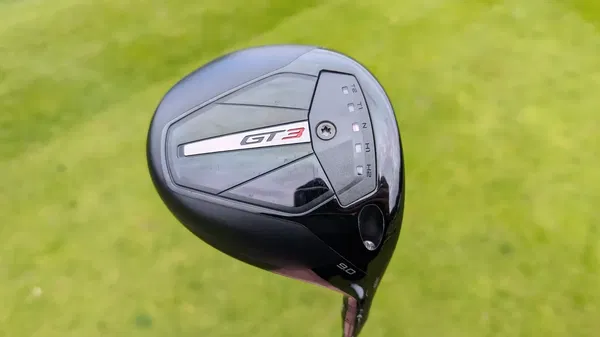
Titleist GT3
Key Features:
- Seamless Thermoform Crown: Constructed from brand new Proprietary matrix polymer
- Titanium speed ring: reinforces and stabilises the perimeter of the clubface for improved ball speeds
- Adjustable CG track: fitters and golfers can select between five CG locations to achieve optimal ball flight and launch
Price: £579 / $649
Pros:
- Incredible ball speeds from across the face
- compact head design will suit the eye of the better golfer
- adjustable CG is an excellent feature
- looks and sounds fantastic
Cons:
- High price point might be difficult to stomach for some golfers
Titleist’s new GT line, replacing the highly successful TSR range, introduces the GT3 driver, designed for low-to-mid handicap players who want to keep spin down.
A key innovation is the use of a Proprietary Matrix Polymer crown, a first for Titleist, which enhances ball speeds across the face without compromising the brand’s signature sound and feel.
The compact, pear-shaped GT3 driver incorporates advanced aerodynamics, a split mass construction, and a speed ring with Variable Face Technology (VFT).
During testing at the Titleist Performance Centre, the GT3 delivered a 4mph ball speed increase over the TSR4, consistently maintaining impressive smash factors even on mishits.
Visually, the GT3 retains Titleist’s timeless elegance, with subtle design upgrades. The high-gloss GT panel contrasts with matte black wings, offering a sleek, modern look while retaining a classic feel at address.
On-course testing showed excellent performance, with exceptional carry distances and forgiveness even on off-centre strikes.
Overall, the Titleist GT3 is a standout driver for 2024, combining cutting-edge tech with classic aesthetics. Though priced at a premium, it offers excellent value, making it a top choice for serious golfers seeking improved ball speed and consistency.
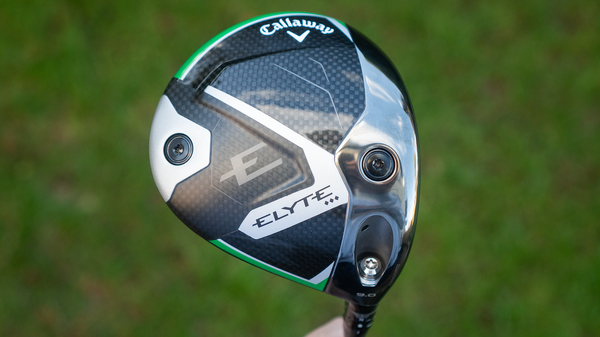
Callaway Elyte Triple Diamond
Key Features:
- Enhanced swing speed via new aerodynamics of the head
- All new Thermoforged Carbon crown
- Ai10x face delivers superior ball speeds and launch conditions across the face.
- 450cc head for the better player
- Interchange front-back weights
Price: £529 / $649
Pros:
- One of the fastest drivers of 2025
- Sleek profile looks fantastic behind the ball
- Delivers low spin rates for fast swing speed players
Cons:
- Will only be suitable for a very small selection of golfers
The Callaway Elyte Triple Diamond is the standout low-spin driver of 2025, designed for skilled players seeking precision and speed. With a compact 450cc head and gloss crown, it offers a premium aesthetic and confidence-inspiring profile at address, making it a top choice for better players.
This model isn’t about forgiveness—high handicappers should look elsewhere. Instead, it’s built for speed and control, aided by enhanced aerodynamics and the new Ai10x face. Testing revealed the driver feels fast through the swing, with improved aerodynamics noticeable in transition. While its feel off the face is slightly muted compared to other Elyte models, its performance stands out, offering impressive ball speeds and the potential for shot-shaping.
Adjustability options, including hosel settings and weight placement, allow players to fine-tune for their desired ball flight. Surprisingly, this year’s Triple Diamond felt less fade-biased than past iterations, making it more versatile while maintaining its low-spin profile.
While it’s not the most forgiving or user-friendly option, the Elyte Triple Diamond excels in speed and precision, cementing its place as a premium choice for advanced players in 2025. If you’re seeking a fast, low-spin driver, this is worth a serious look.
READ OUR FULL CALLAWAY ELYTE TRIPLE DIAMOND DRIVER REVIEW
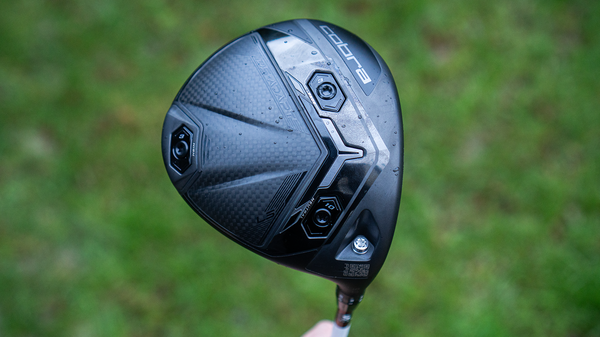
Cobra DS- Adapt LS
Key Features:
- SmartPad technology to keep face square with loft and lie changes
- Progressive Aero shaping to reduce drag and increase club speed
- Movable weight technology to maximise shot shaping
- FUTUREFIT 33 Adjustable Hosel System
Price: £469 / $649
Pros:
- A fast, fully customisable low-spinning driver offering from Cobra that will certainly rival any brand for speed in 2025
Cons:
- Forgiveness still lacking
- I would heavily push even the most established of golfers into the core model due to the forgiveness improvement
The Cobra DS-Adapt LS driver takes speed and customisation to new heights for 2025. Featuring the innovative FUTUREFIT33 adjustable hosel, it offers 33 loft and lie settings to suit a wide range of golfers. Paired with the Smartpad sole design, it ensures the clubface stays square at address, no matter the configuration.
Designed for players prioritising speed, the LS model features a smaller, fade-biased head with a sleek, aerodynamic look. It excels at delivering exceptional ball speed and low spin, especially when struck out of the centre, making it ideal for confident ball strikers seeking precision and shot-shaping.
In testing, the LS model achieved impressive results, particularly in clubhead speed, gaining up to 1 mph over traditional 460cc heads. However, its smaller head and fade bias may be less forgiving for players prone to off-centre hits or high-spin misses. The FUTUREFIT33 system aids customisation, minimising misses and enhancing fit for most golfers.
Cobra’s DS-Adapt LS also stands out for its value, offering premium performance at a more affordable price than competitors. While it may not lead in forgiveness, it’s an excellent choice for advanced players seeking speed and customisability. For more forgiveness, the core model is a great alternative.
READ OUR FULL COBRA DS-ADAPT LS DRIVER REVIEW
Things to consider when buying a new golf driver:
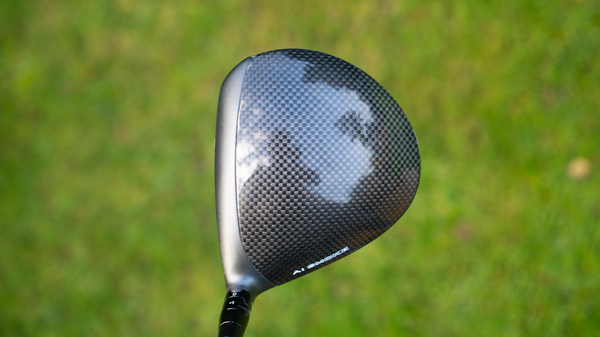
1. CLUBHEAD SIZE
The size of a golf driver's head is measured by volume in cubic centimetres and the maximum size allowed by golf's governing bodies is 460cc.
All of the latest golf drivers sit between 440cc (drivers suited for players who like to shape the ball more in the air) and 460cc (drivers suited for players who crave more forgiveness).
Size matters. Find the one that appeals most to you at address.
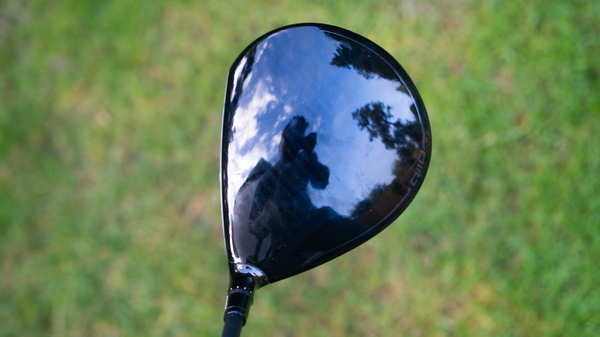
2. MATERIALS
Gone are the days when we used persimmon woods or metal woods made of steel. The latest golf drivers on the market are either made of titanium or carbon heads.
Titanium has become a particularly popular choice for golf driver heads because it is a strong, light and durable material.
As a result of using either titanium or composite materials, golf companies can design 460cc drivers without increasing weight. This means players can swing the club faster and hit the ball further and more accurately because of the larger sweet spot on the face of the driver.
When used on the crown or the rear section of a clubhead, carbon can reduce the overall weight of a driver.
When it comes to the crown, you also want to not only find the right shape as you stand over the ball at address, but also the right design and colour that fits your eye.
Some crowns are shiny, others have a matte finish that reduces glare. In our personal opinion, the latter appeals more (well, certainly when the sun comes out!)
3. MOMENT OF INERTIA (MOI)
MOI is a common phrase in golf, particularly when it comes to the driver.
It refers to a club's forgiveness, specifically its resistance to twisting at impact.
A driver with a high MOI means it is less likely to twist or rotate when you strike the ball outside the centre of the face.
4. CENTRE OF GRAVITY (CG)
CG is another common phrase and it refers to the single balance point of the driver. Different brands have opposing views on where best to place the CG in their drivers.
The CG of a driver can be moved vertically, horizontally, or back and forward in a clubhead by moving fixed or adjustable weights inside the head.
It can be a bit of a minefield, so the only real way to find out which CG location works best for you is to get custom fitted.
In general, the lower and further back the CG is, the higher the ball will launch as the spin is increased. The driver will also be more forgiving as the MOI will be higher. Moving the CG forward will increase ball speeds but reduce the ball spin and the MOI.
A balance of high launch and low spin is the holy grail.
WATCH OUR LATEST VIDEO ON GOLF DRIVER CUSTOM FITTING
5. LOFT AND LIE
Driver loft refers to the angle of the face in relation to the vertical, and each model is typically available between 8 and 13 degrees.
Lower lofted clubs (e.g. 8 degrees) have a slightly lower trajectory, but go a little further in the hands of players who can generate plenty of clubhead speed.
Higher lofted clubs (e.g. 13 degrees) are better for players with slower swing speeds or players that need extra help to get the ball airborne.
Lofts in between (e.g 10.5 degrees) are for the vast majority of players who have neither particularly fast nor slow swing speeds.
With a plethora of adjustable golf drivers now available, however, it means you can tinker all day and play about with your loft. To do this, you simply remove a screw in the heel of the club, connect the shaft to the clubhead and replace it with a predetermined setting.
However, be careful when adjusting the loft of your golf driver because that will sometimes also change the lie angle - the angle of the shaft to the ground at address. A change to the lie angle will affect your ball flight horizontally left or right.
But remember, you cannot change the setup of your driver during your round.
Dialling in the correct loft and lie is a vital aspect of the custom fitting process, so we strongly recommend you opt for one, especially if you are looking to maximise your performance with the driver.
6. WEIGHTS
Using weights in the clubhead of a driver can have a significant impact on improving a player's ball flight as it changes the club's CG and MOI properties.
Of the drivers that feature weights, you can expect to see sliding weights or plugs from anything between one and 20 grams on the sole of the club.
The benefit of using more weight in the heel is that it will create a draw bias, while placing more weight in the toe will produce a fade bias.
And if a player craves a higher ball flight, they can simply place the weight in the back portion of the head.
7. SWINGWEIGHT
This one often goes overlooked, but it's an incredibly important feature of a golf club to note.
Knowing how much your driver weighs (total weight), and of that weight, how much of it is in the head (swing weight), is becoming a critical part of improving a player's driving.
The total weight and the head weight of your driver have to be matched to your physical strength, your swing tempo and your golfing athletic ability.
Play with too light of a total weight or swing weight for your strength, tempo and ability and your percentage of off-centre hits increases.
8. SHAFT FLEX
Shafts are important in all golf clubs, but especially drivers.
Using lighter, less stiff shafts will produce a higher, right-to-left biased ball flight, while heavier, stiff shafts will launch the ball lower with a higher tendency to shape the ball to the right.
The right shaft can help players hit the ball further, straighter and more consistently. Most manufacturers will offer drivers in regular (R), stiff (S) and extra stiff (XS) shaft flexes.
Other flexes include light or ladies flex (L), senior (A) and more extra stiff options (XXS, XXXS).
Again, a custom fitting session will help find the perfect shaft flex for your game.
9. SHAFT LENGTH
Although the legal limit for the length of a driver is 48 inches, most drivers have a shaft of around 45 or 46 inches to strike the best balance of distance and control.
While longer drivers will typically increase speed and help players hit the ball further, the additional length of the driver will sacrifice an element of control and accuracy.
So unless you are a basketball player, anything around 45 inches in driver length will typically suit the vast majority of players.
10. SOUND / FEEL AT IMPACT
Yes, finding the right shaft, clubhead and swing weight combinations are all important traits to consider when it comes to the feel of a driver, but the sound at impact is also what is going to make you want to keep coming back for more.
If your driver doesn't sound and feel right to you at impact, then it's going to become pretty unattractive to you. Yes, there are no pictures or sounds on the scorecard, but this in all likelihood is an expensive purchase for you and you want to feel satisfied every time you pull the trigger.
Find yourself a driver that not only works for you off the tee peg, but also gives you a satisfying feeling at impact and makes you want to keep coming back for more.
Many of the major golf manufacturers have dramatically improved their acoustics through the years, however, so we would be surprised if you find one in the class of 2023 that fails to satisfy your needs.
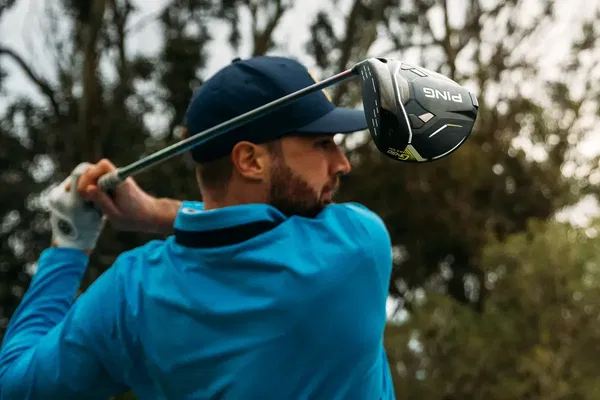
How often should I change my golf driver?
A question that often warrants many different answers.
Golf driver technology is now so advanced that all changes year to year are very small, so constantly changing your golf driver is not usually necessary.
However, there are reasons why you should consider changing, as listed below:
Golf swing change - A dramatic change in your golf swing (such as a change in AOA, face angle, or swing speed) will mean your driver that was working for your old swing may not be optimal for your new swing. If this is the case then it’s best to see a local PGA Pro or a qualified golf custom fitter to determine what needs to be done. It could be an adjustment to your current driver or even a new shaft.
Shot Data - We would always recommend using a launch monitor every year to ensure that your driver is still optimal for your swing. You may find some major or minor changes have occurred. The best golf pros on the PGA Tour do this every week in order to keep on top of things. If you are serious about your golf game then we strongly recommend you check out your shot data at least once a year.
Time - Every three to five years is when we recommend you take a look at new golf driver models from the game’s biggest brands as that is how long it takes to notice significant changes in driver technology for consumers.
